KHEN SHISH
☰
☰
x
- ← ON EXCESS AND RENOUNCIATION
- Ruti Direktor
- 2006
BACK TO SAFED
Khen Shish was born in Safed. In her childhood, she recounts, she used to wander in the wadis, by herself, daydreaming in reverie, collecting leaves and flowers, cutting papers, coloring and pasting. At 20 she began studying art at Oranim College. Then she went to Europe and lived intermittently in Rome and in Jerusalem for several years. She spent some time in Paris and in London, and two years in Berlin. Now she lives in Tel Aviv.
Safed is the beginning and the source, the great big womb from which everything springs, erupts, and whereto it all returns. But the Archimedean point of her art is actually London. During one of her first trips to Europe Shish arrived at the Tate Gallery, where she saw Rothko’s paintings, the crimson-maroon series. In Rothko’s room she experienced a moment of what may be termed illumination or revelation. There she realized that what she sought in art was no less than the rarity of the sublime upon which Rothko had touched. Her path to the sublime, as may be seen today, in retrospect, would follow from the lowly, wallowing and soiled, from suicidal artistic acts that sometimes stem from the multiple and the excessive and the overflowing, and sometimes are embodied in a single line and great renouncement.
In recent months (Summer 2006) Shish began working with cardboard boxes she finds on the street, papers of various kinds which she treats as materials, and photographs she cuts from magazines. She clips, cuts, and glues, staples together, wraps-bandages with masking-tape, covers with stickers. The wide open mouth of a bear is fused into Bruce Lee’s face; white envelopes are attached to one another, transforming into a mound of open-closed tongues; a paper birthday plate becomes a round surface; pinkish flamingo photographs are covered with leaf-shaped paper scraps, brutally stapled together. And all these – flamingo and Bruce Lee and virgin-white envelopes – Shish covers with stains of black and gold, spoiling and exalting them at the same time, crushing and trampling, redeeming and sparing.
All this drama is spawned by industrious manual labor, the type of practice reminiscent of handicrafts, in fact roughly calling to mind the things she used to do as a child in Safed – “things,” before they ever became works – and more accurately, the motivation that spurred her: the hands work while the mind is elsewhere. The gestures of the hand lead the practice forth, the mind has not yet accounted for what the hand already executed. Only later will she muster up the courage to look at them – the cardboard boxes, the envelopes, the creased papers – and christen them as artworks.
One may also discuss this in terms of “unplugged,” in the sense of a return to the basic and primal, to the most unmediated. Pencil on paper, paint on some kind of surface, scissors and glue; painting with one’s fingers, singing a love song. Collages of magazine pages and cardboard assemblages that come together to form amulets or decorations of sorts; kindergarten and occupational therapy type of works. And lo and behold: the more we thrust artistic insults at them, the higher will the works rise above the cliché and transpire as a genre all their own, inventing themselves. Flowers and flower pots made of leaf- (or eye-, or tear-) shaped paper cutouts, reminiscent of Asim Abu-Shakra’s sabra pots or, alternatively, of Van Gogh’s sunflowers, while at the same time resembling nothing but themselves. The context, in any event, will be expressive.
Returning to Safed as an allegory, then.
Safed as an allegory for the primal, primeval place that doesn’t-yet-know-it-is-art; an allegory for the tuber from which the artist will later blossom; an allegory for a state prior to knowledge and education and acquaintance with the history of art. In this respect, Shish’s art still transpires, to this day, on the scale between preservation of that raw, formless lava that motivates the artistic practice, and the skill and command acquired over the years. She oscillates along the axis between erupting intuition and profound understanding of what she does; between vegetable cardboard boxes and Rothko’s sublime; between Safed and London, Paris or Berlin.
STORY OF THE EYE
In the past ten or fifteen years, during which Shish’s artistic language evolved, an image bank has crystallized repeating itself over and over in different incarnations: flowers with drooping inflorescence, trees whose roots are in the air, upside down crowns, reclining hearts, light bulbs and sun, bird’s legs, leaves that are also tears that are also nooses, horses, houses with chimneys from which smoke billows. Most of the images contain some anomaly – the crown is inverted, the heart lies down, the flower is wilted, the house has no foundations. They are conductors of beauty, yet contain an impairment, their beauty is upset. We shall still return to what appears to be the ongoing disfiguration of beauty, but during the acquaintance phase with Shish’s artistic world one ought to linger on the image most present in her works – present, metamorphosed, reemerging in the form of another image: The eye. Eyes. Countless eyes.
The eye sometimes appears as a leaf; it may, all of a sudden, float on its own on a large pink canvas. At times it is torn from a self-portrait photograph or crossed out with aggressive masking-tape strips. It incarnates into the image of a light bulb. It can be identified in the hangman’s noose, while at other times it is a flower. It is at once poetic and violent. The violence is directed primarily toward itself: a plucked, torn, absent, covered eye. At the same time, the empty gaze directed at the viewer from the works is startling and deterring. Inevitably the viewer becomes a part of the reign of terror of what Bataille calls “the gelded eye.” (1) Mutilation of the eye through its isolation and introduction to a dual position – a wounded eye which, in turn, “wounds” the eye of the beholder – recalls a famous historical precedent: Dalí and Buñuel’s joint film from 1928, Un Chien Andalou. The camera lingers on the slicing of an eye. The horror invoked by the images is especially overwhelming since it involves the very organ by which we observe the horror. The seeing eye is also the one that refuses to observe the horror. Something in the self-mutilation directed at the viewer infiltrates Shish’s works in various ways when she cuts her photographed eyes, tears them, covers and mutilates, only to re-draw them, in their full splendor, black on pink, black next to gold.
Dalí and Buñuel’s film is an anchor that calls for elaboration, to examine through it not only the lure-repulsion relationship which Shish activates toward the viewer, but also the meaning of the Surrealist condition with respect to her works in general. In the Surrealist agenda the eye emerges as a disturbing, meaning-generating organ, whose ability to observe the world is the least of the qualities attributed to it. The Surrealist eye is seeing and blind, erotic and provocative, disconcerting. Seeing is perceived as dangerous, disastrous, subversive. The paintings of Max Ernst, André Masson, or Joan Miró contain eyes – isolated, taken out of the (reassuring) context of the face, usually shut, indicating that the real observation is directed inward, into the subconscious, into dream, into the repressed layers of consciousness. Sleep and blindness were perceived as the privileged conditions of seeing. Not incidentally, Oedipus, who blinded himself in order to see the truth, is one of the heroes of Surrealism.
The eye plucking in Shish’s works is executed on Xerox prints of self-portraits. Shish attaches these black-and-white Xerox photographs with masking-tape to television screens, tearing the pupils out. The television is turned on in its most basic mode: a flickering blue screen devoid of an image. When the eyes are removed, the screen’s blueness bursts through. It is sky-blue, bright blue of Gothic stained glass – and at the same time, obviously, it is the most synthetic, technological blue, an alienated and impersonal blue of staring.
The television’s muteness complements the castration of the eyes and the hollow dazzle of the blue screen. Something is blocked, something is sealed, something doesn’t want to be said, to see or be seen. What is it that the eyes do not want to, or cannot see? Bataille will claim it is obscenity. To decent people, he writes in Story of the Eye, the universe seems decent, because they have gelded eyes, “that is why they fear lewdness.” (2)
For a while it seems as though art’s solution for the seeing/non-seeing paradox is introspection, looking inward like the Surrealist eye. A temporary solution. Salvation will not come from there. Shish plucks the eyes out, but then paints the obscene: big black monsters. A purulent abscess that bursts under the burden of black and gold.
And there is also Picasso’s solution, which Shish adopts as well: to create as much as possible, to postpone observation (namely, the criticism and reservations) in favor of practice. Transgression and excess.
In the more immediate context of Israeli art, the iconoclasm applied by Shish to her self-portraits calls to mind Yocheved Weinfeld’s sewn photographs from the 1970s or Hila Lulu Lin’s manipulated photographs from the 1990s onward. Weinfeld “stitched” her eyes onto black-and- white photographs, blinding herself, mutilating, blocking the gaze. In the 1970s such an artistic act was read as one responding to the woman’s place in the history of art – the one intended to be looked at, the one denied the right to look back. Weinfeld prevented her eyes from the viewer, radicalizing the incorrectness inherent in presenting a wounded, bruised female face. Hila Lulu Lin, via more progressive photographic techniques, inserts egg yolks or raw red meat into her photographed eyes. The effect is startling, uncanny. The interchangeability created by Lulu Lin between the eye and the egg, like the images’ metamorphoses in Shish’s paintings, is associated with the eye’s incarnations into an egg, a sun, and a bull’s ball in Bataille’s Story of the Eye, a book which came out concurrent with Un Chien Andalou, in the prime of the Surrealist years.
The relevance of Story of the Eye to Shish’s art lies not in the external plot – an account of the radical sexual experiences of a boy and a girl – but in the metaphors, the essence stemming from the depicted objects and their metamorphoses. The eye in Bataille’s story deviates from its ordinary function, becoming a key erotic organ. Eroticism manifests itself in radical forms of transgression and risking, culminating in death. The centrality of the eye in Bataille’s story, which at the time was considered outrageous and pornographic and was published under a pseudonym, echoes the eye’s presence in Shish’s paintings – a libidinal eye; sensual and total. Even when it incarnates as a burnt bulb of sorts or a sun with rays, appearing as if it had just emerged from Picasso’s Guernica, and soon thereafter, when it resembles an illustration for (Kristeva’s) Black Sun, as elaborated by Ktzia Alon and Dalia Markovich in their catalogue essay, and even more so – as (Bataille’s) Rotten Sun. In any event, it is an eye-sun that does not appear in its luminous, bright, comforting form, but rather through its violent, dangerous, destructive energy.
In a series of paintings from the summer of 2006 Shish depicted black trees with pink fruits. Their identification as fruits is a mere automatic conditioning. A more accurate description would be pink circles, round and very beautiful, flowing from the tree downward. Dissociated from the round treetop, they suggest eyeballs. At the foot of one of the trees one can just barely identify the word “Safed” bursting forth from under coats of white paint. The roots of the tree are like bird legs; from a different angle, they resemble crutches.
Either way, on the tree or next to it, the pink rings/fruits/eyes are incredible in their unexpected sensuousness. Their pink flesh on the black tree, against the backdrop of the white canvas, transforms the image into a type of vibrating Tree of Knowledge marking temptation and imminent disaster. “[F]or the first time, I saw her ‘pink and dark’ flesh cooling in the white milk,” as the boy in Story of the Eye describes Simone on their first sexual encounter, when the girl sits naked before him in a saucer of milk... (3) Henceforth the pink, white and black will evolve into a story that breaches the boundaries of pleasure beyond any reasonable probability.
Shish’s tree grows pink round eyeballs. The fruit of knowledge is associated with seeing and the gaze; the eye emerges as a dangerous, erotic organ, binding pleasure and sensuality with torment and pain. Eros and Thanatos, in Freud’s terms, sustain the existential experience; Shish’s works swarm with sensuality, alongside an ever-present lurking threshold of death.
The perfectly round fruits also bring to mind Pauline Réage’s Story of O (4) from the 1950s, another novel transpiring between the pornographic and the metaphorical. A woman named “O” goes from hand to hand as a pure object. She transforms into the very form of the letter of her name – a round eyeball, a ripe fruit. The round shape symbolizes her being an absolute receptacle, ostensibly signifying her humiliation, but paradoxically it is also a sign of power – a perfect, self-containing form, yielding by virtue of its love.
This is also the dialectic conveyed by the fruits of Shish’s trees and by many of her other works: great hermeticism alongside sadomasochistic violence. The painting is the world, and requires nothing but itself, and forthwith – it also absorbs injuries and bruises, taking upon itself the fate of being scarred, thrusting the volumes of anxiety and horror back at the viewer.
Alongside the countless eye images appearing in the works in contexts of violence and self-mutilation, there are also tears. The liquid discharged by the eye. Not representations of tears, but rather – as much as possible – the thing itself, in the most unmediated manner. Shish places pieces of paper on her weeping eyes, saturating them with a mixture of tears and runny makeup… Something about this moving act seems to say: a tear is a tear, not a metaphor, nor an allegory.
FLOODING THE WORLD WITH PAINTINGS
The images in Shish’s works may be divided into vertical, linear and upright, as opposed to sprawled, containing and orbicular. On the one hand – the stems and trunks, the bamboo stalks and gallows all slice the canvas or the paper with straight lines; on the other hand – the eyes, the apples, the flower vases, the suns, and the houses are womb-like and embracing. Most of them are images pertaining to nature, albeit there is something unnatural and incorrect about them all. The houses are always bottomless, like the vases; the trees hover in mid-air, and the roots, if there are any, become bird’s legs or crutches. Something is principally missing, crippled, and irreparably distorted.
The tension nourishing the paintings stems from the antithetical positions motivating the act of painting: on the one hand, recognition of the fundamental flaw, and on the other – the wondrous ability to create a whole world with a single line, whether in pencil or brush. Drama, pathos, breathtaking beauty. Something has happened. A flower withered, but with it something in the world has shattered. In this respect, concurrent with the direct confrontation of obscenity, to use Bataille’s words, or “the horror, the horror,” as the last words of Kurtz from Heart of Darkness, or the wallowing in abjection, as Kristeva calls it – the stand taken by Shish vis-à-vis the art world is entirely romantic; it is the belief in the power of the single line to say something meaningful, in the unmediated directness of a painting executed with one’s fingers, in a drama transpiring on a 6 m-wide canvas, in the thrill of attaching cardboard to photograph, in touching art’s most fluttering materials. Risking (self-humiliation, over-exposure) and renouncing all defense mechanisms.
Thus, for example, in a video piece created recently, whose format resembles the TV works, Shish faces the camera, frontal and motionless, singing unaccompanied a song she has written; a love song, a song of yearning for a faraway love. Basic and desperate, running the risk of being as sentimental and romantic as one can be. Her eyes are torn. The violation of the eye and elimination of the gaze may be read, in this case, almost as embarrassment for the unmediated directness she has nevertheless allowed herself under the definition of ‘art work.’
This brings us back to the Surrealist condition transpiring in her work, not only through the images’ metamorphosis, but also through belief in radical acts and their effectiveness. Shish’s radicalism takes place entirely within the field of painting and art objects. The art world is the arena within which she operates, the one from and in relation to which she invents herself, transgresses, wrestles.
In her texts about Shish, Tal Ben-Zvi places her in the Mizrahi (Eastern) context. She perceives Shish’s art as oscillating along the scale of Israeli and French Tunisian Orientalism (her parents’ origin), pinpointing a biographical meaning in the black (5). But the Eastern black is but one aspect in the broad range of meanings ascribed to “black,” among them black-on-white as a classic of Western painting. When asked who her favorite artists are, Shish answers without hesitation: Picasso, Giacometti, Rothko; artists of the Western modernist canon.
Rothko enables her to speak of art in such terms as sanctity, miracle, a believers’ religion. In Giacometti’s case she relates to the ultra-fine, needle-thin figures covered with the artist’s fingerprints. She imagines him holding the lump of matter in his hand, nullifying it until it becomes a quivering line. Shish’s single-stemmed flowers strive to reach that place, on the verge of nullity. “Every time I paint the elongated flowers, I want Giacometti to see it,” she says.
The affinity with Picasso seems to be due to the inventiveness, the flexible pendulation between materials, and also – the infinite abundance of works. Shish belongs to the species of productive artists. On the scale between Picasso and Duchamp – the obsessive producer versus the work-avoider – Shish is the overflowing artist. Her work may be described in terms of lava – boiling from within, erupting. Time and again. Endeavoring to flood the world with her works, like Picasso.
In Israeli art she ought to be linked with distinctive line artists, like Aviva Uri and Raffi Lavie, and with a conceptual-expressive artist, such as Moshe Gershuni. The ability to produce poetry from a single line, and a flowering field from a row of scribbled lines, calls to mind the nature of Cy Twombly’s ostensibly-undomesticated but, in fact, ever-so-cultured lines.
The most poetic of Shish’s images is the flower. It is also the most banal and hackneyed of images, and it emerges in her work in every possible form: a single flower rendered in pencil on paper, a field of black flowers painted by the fingers on canvas, stems in pencil and blue stains, flowers in black and gold, a feeble, wilted flower.
Diametrically opposed to the flowers are the scary figures created over the past summer months. They evade unequivocal identification, yet conjure up monsters or medusas. These are large winged creatures, their bodies collapse under the weight of two giant lungs, possibly a flowing female bosom; on occasion they sport feelers. They are painted in black and gold.
At first sight, everything in these paintings is wild and vibrating. On a closer look, it becomes evident that the painting is anchored in the tradition of modernist painting – Picasso’s Les Demoiselles d’Avignon, De Kooning’s large women. Unlike the male artists who have thrust the violence of formal deconstruction at their female images, Shish’s monsters are “creatures” more than figures with distinctive gender identification.
The painting’s expressivity and great urgency convey the sense that every paper, every line, is autobiographical. In effect, however, it is hard to extract narratives from the works, not in the immediate, restricted sense of the word. For instance, a great bamboo forest extending over a powerful panorama is devoid of a specific biographical origin, but the atmosphere it conveys – a thicket whose roots are in the air, white darkness, vertical trunks linking the upper and lower worlds – requires no narratal interpretation. The atmosphere is existential. It is the forest of life. The layers of paint applied one atop the other, concealing and revealing, are the canvas’s biography. As in the video piece where Shish sings a love song: the story behind becomes secondary to the very daring to sing aloud with a single line.
The painting – and the video, or TV pieces, or cardboard objects – are all incarnated as manifestations of art striving to refine the artistic experience into its basic and most fundamental constituents, while shedding anything that appears redundant. One facet of this move is the single line or the near-invisible stain of tears or a carving on cardboard. Its other facet is the overflowing excess.
Beyond the eroticism and risk (in terms of art), the surplus and the emptying, the works’ master narrative is the oscillation between great beauty and the ongoing attempt to mutilate it – the painting itself and the viewing experience following from it; between the poetry and lyricism of a solitary flower and the Baroque quality and excess of the scary, bigger-than-life black monsters whose black is stained with touches of gold. The large figures indicate that Khen Shish does not fall into stereotypical male-female categories. Her pink is not of the saccharine-sweet sort, but rather, like the gold – originates in the great gestures of Baroque, in going all the way, to the end of the color’s ability to scream itself out loud.
Georges Bataille, Story of the Eye, trans. Joachim Neugroschal (London: Penguin, 1967).
Pauline Réage, Story of O, trans.: Sabine d’Estree (New York: Ballantine, 1980).
Tal Ben-Zvi, Mother Tongue, exh. cat. (Mishkan LeOmanut, Museum of Art, Ein Harod, 2002) (Tel Aviv: Babel, 2004).
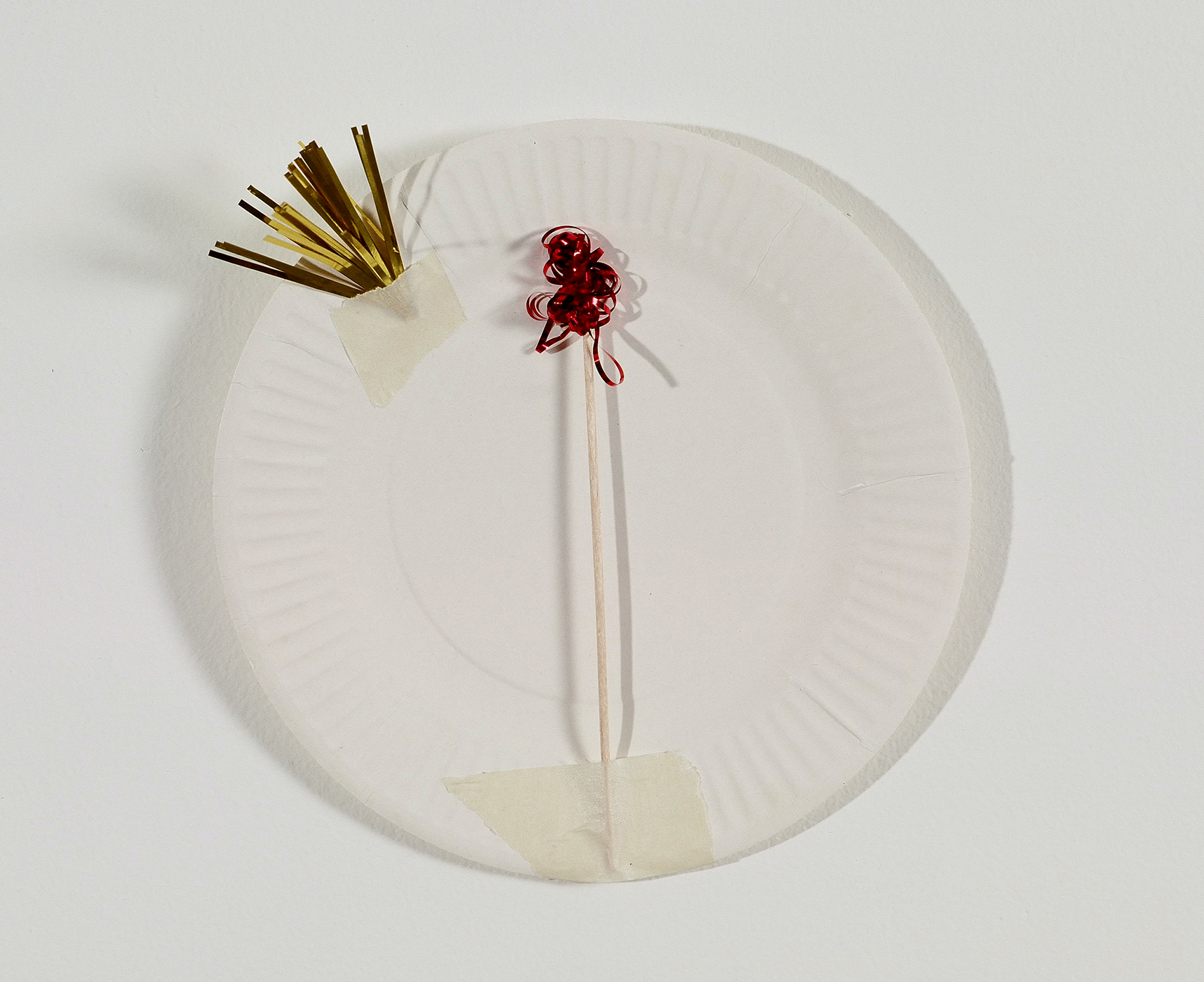
Sun and Flower, 2006, picks on paper plates and masking tape, 19x19
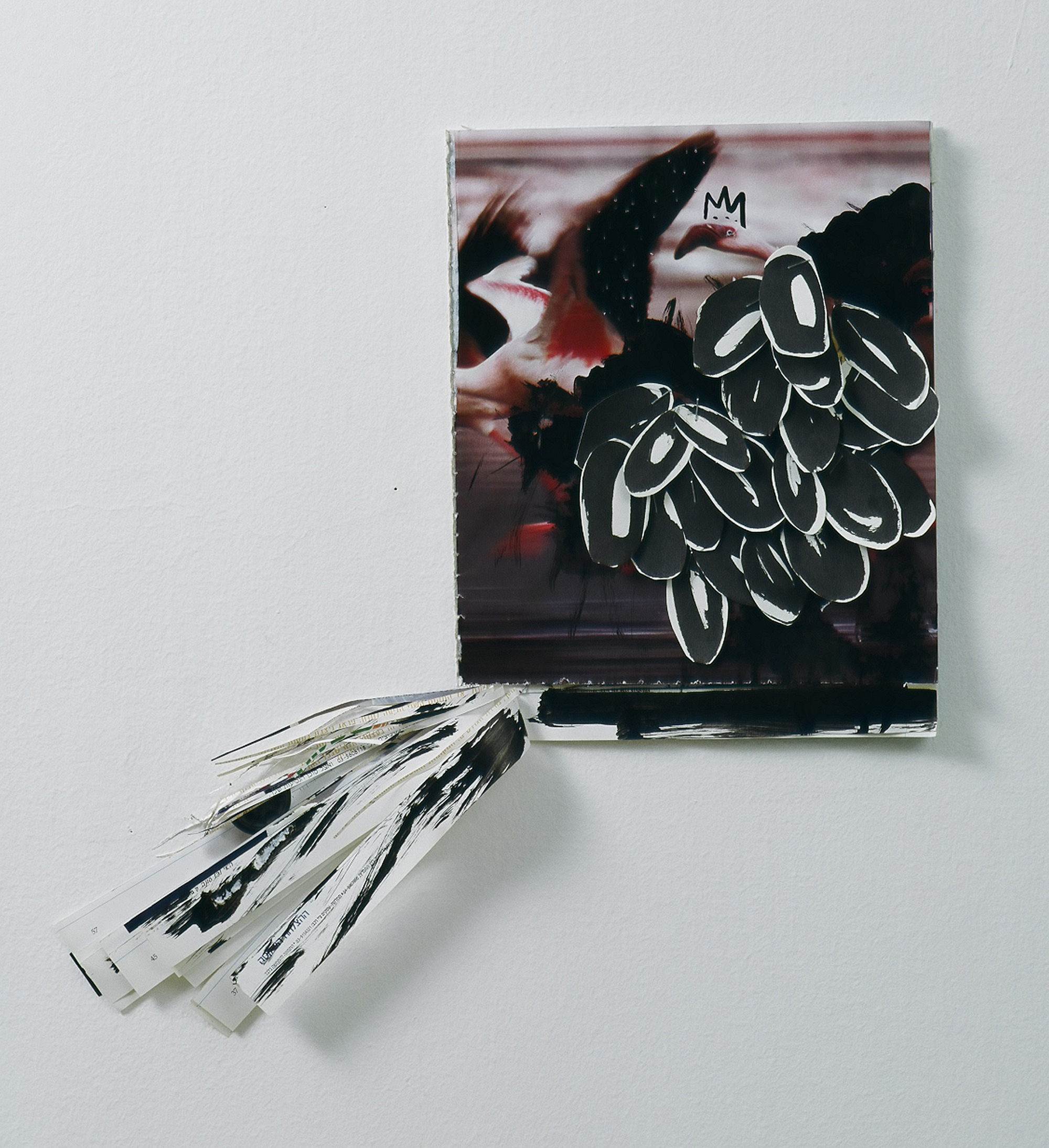
Green Tunis (Tunis El Hadra), 2006, paper clippings and ink on a magazine page, 40.5x27
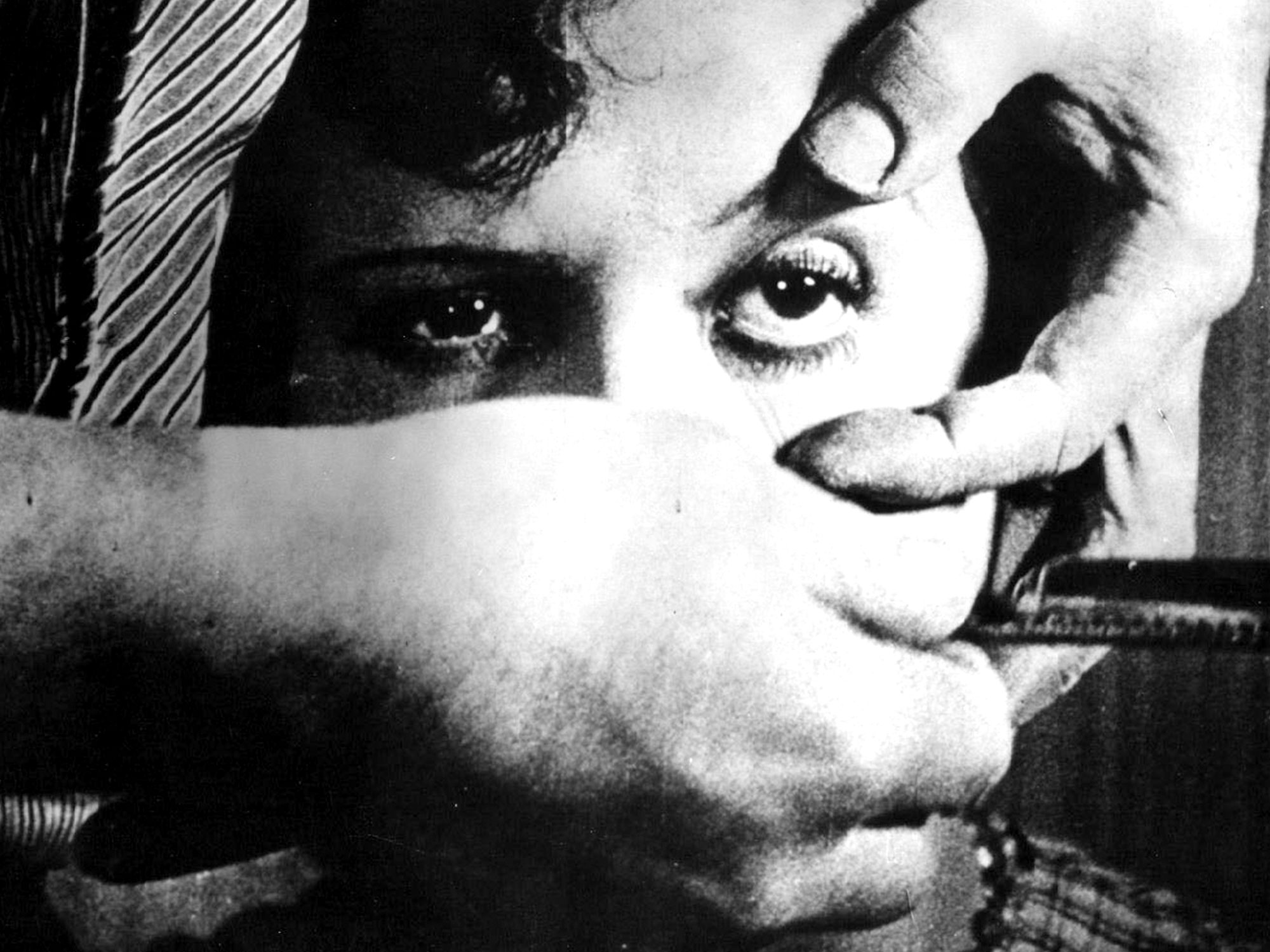
Buñuel and Salvador Dalí, un chien andalou, 1928
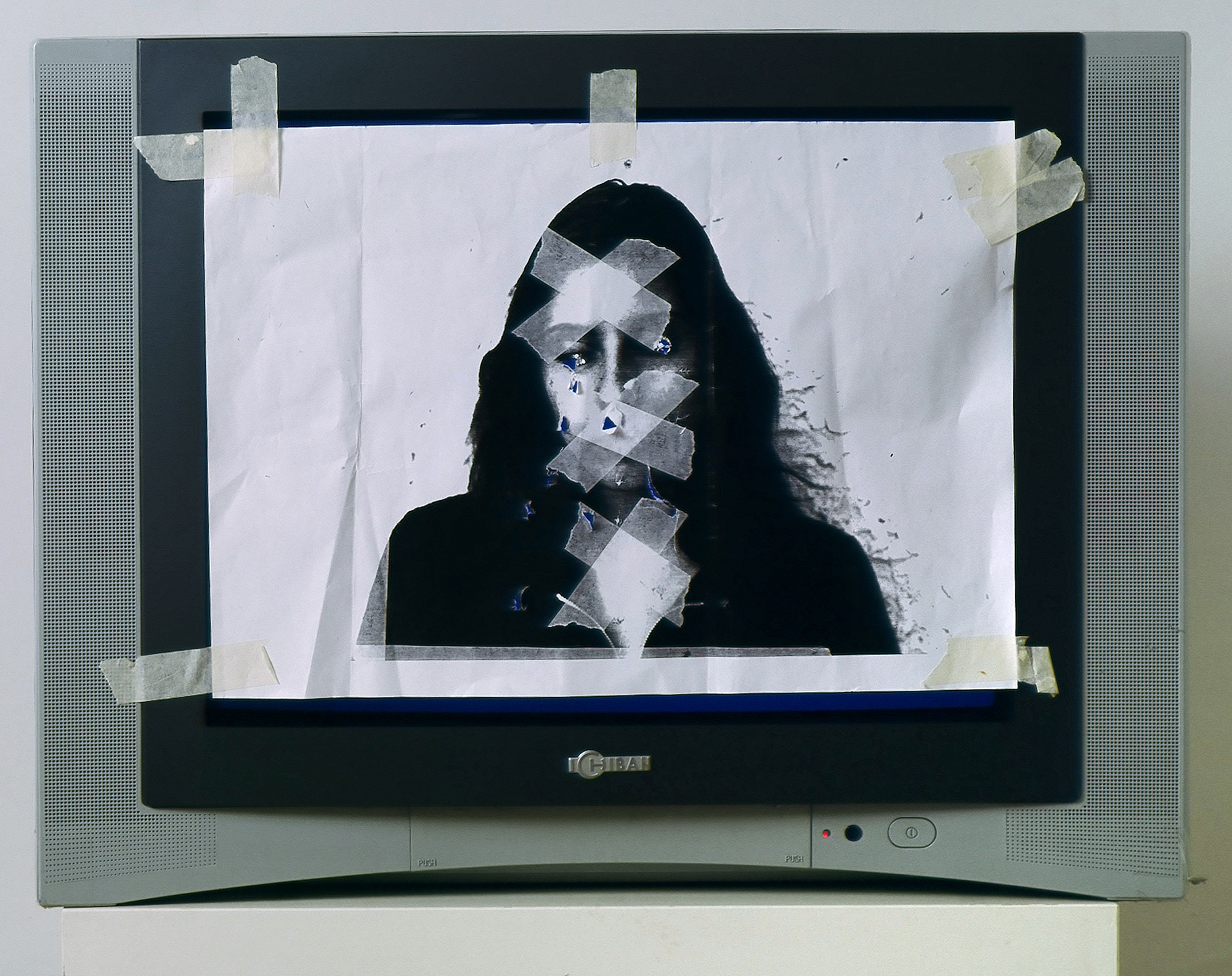
Gouging the Queen's Eyes out, 2006, Xerox photograph and masking tape on monitor

Pablo Picasso, Guernica, 1937
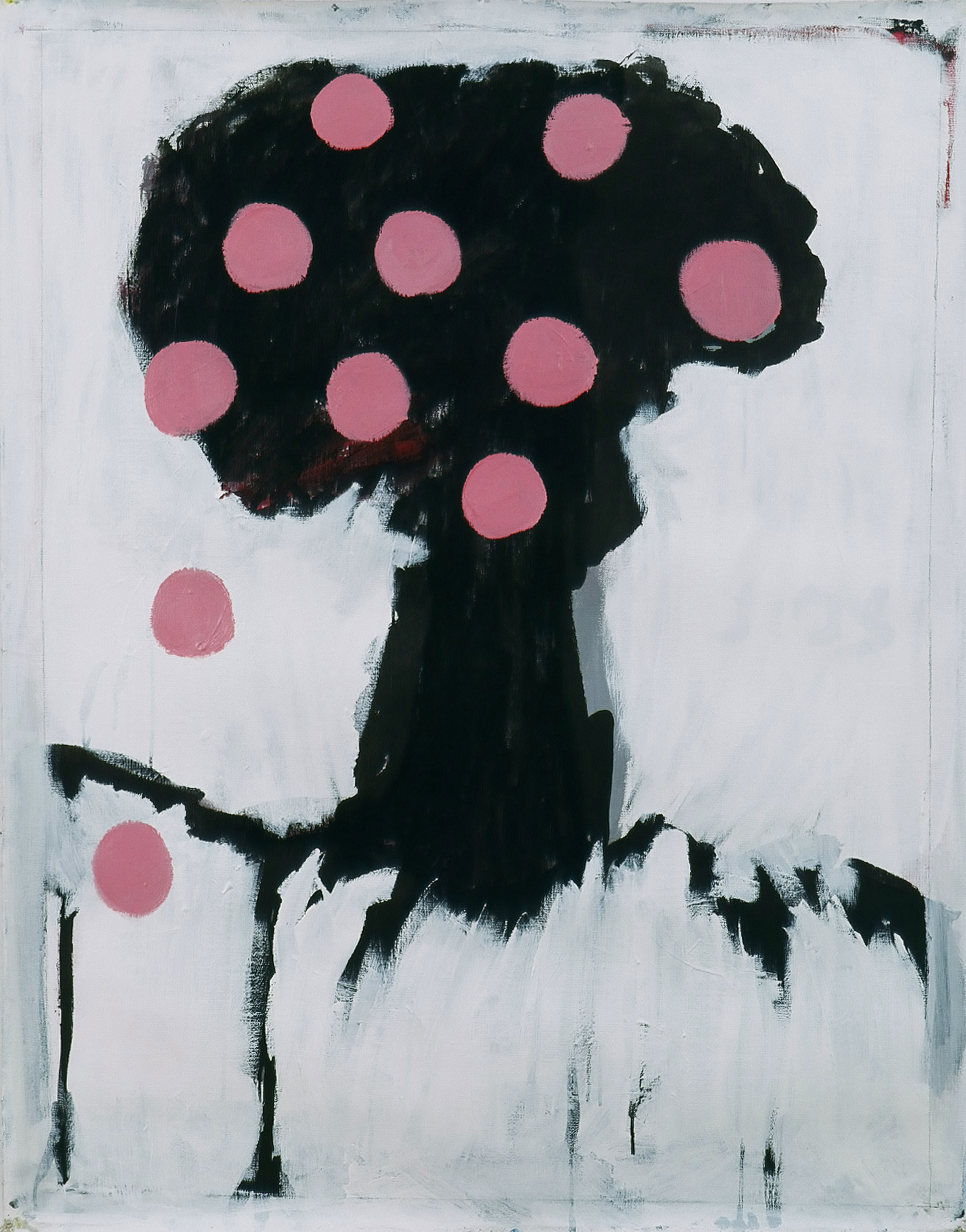
Autumnal Pinks, 2006, acrylic on canvas, 113x86
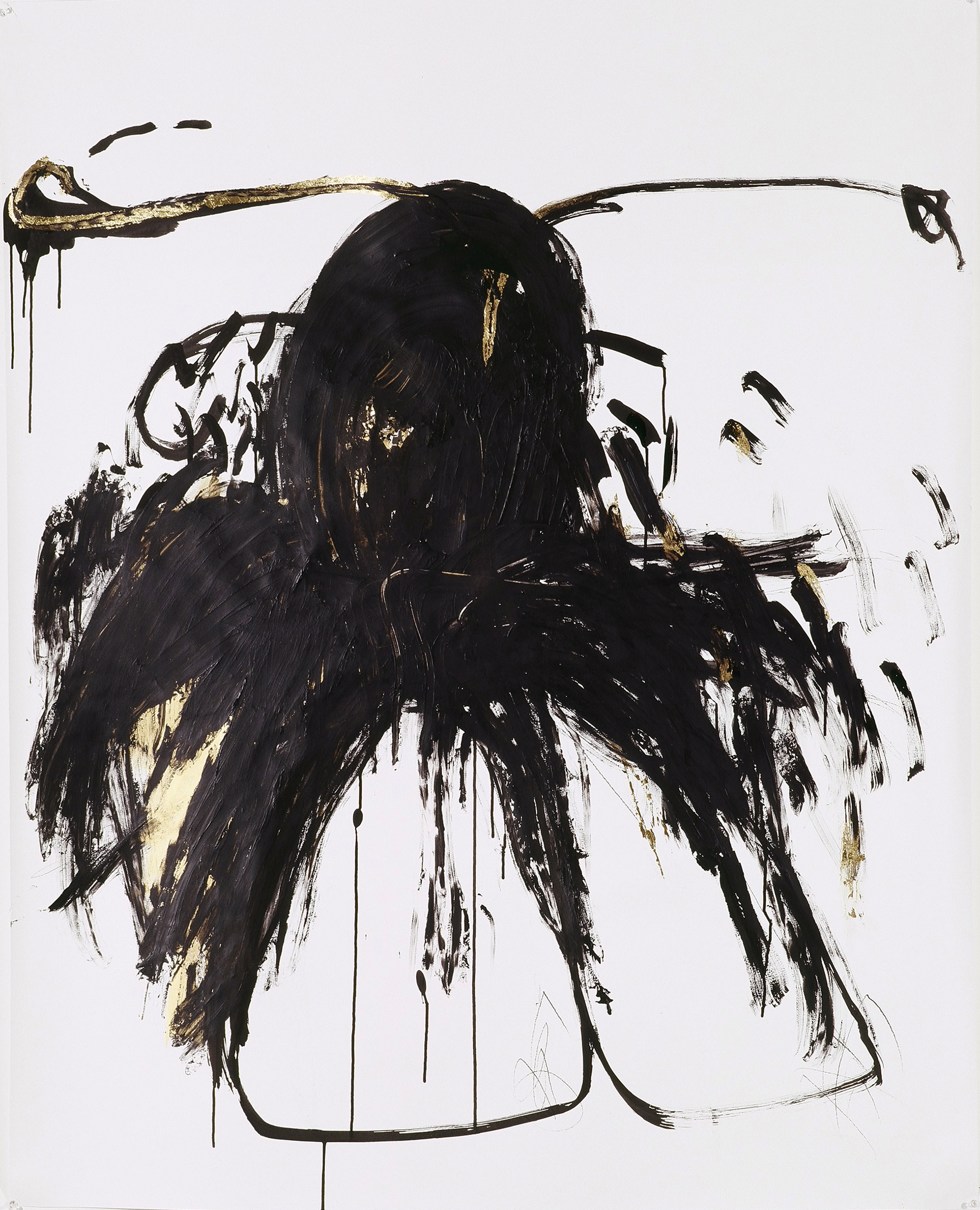
Mademoiselle 1, 2006, acrylic and gold leavs on paper, 150x120
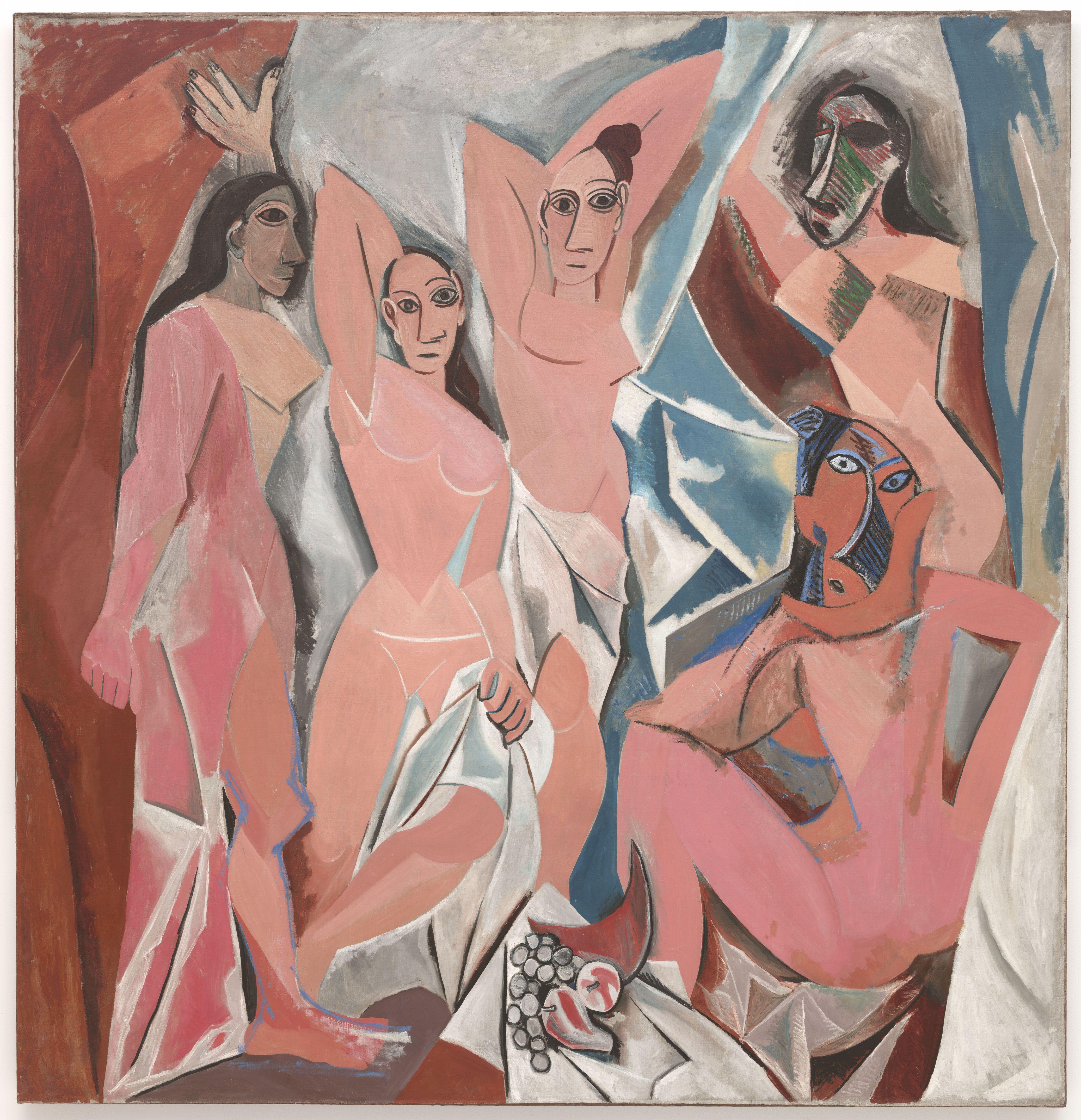
Pablo Picasso, Les Demoiselles d'Avignon, 1907
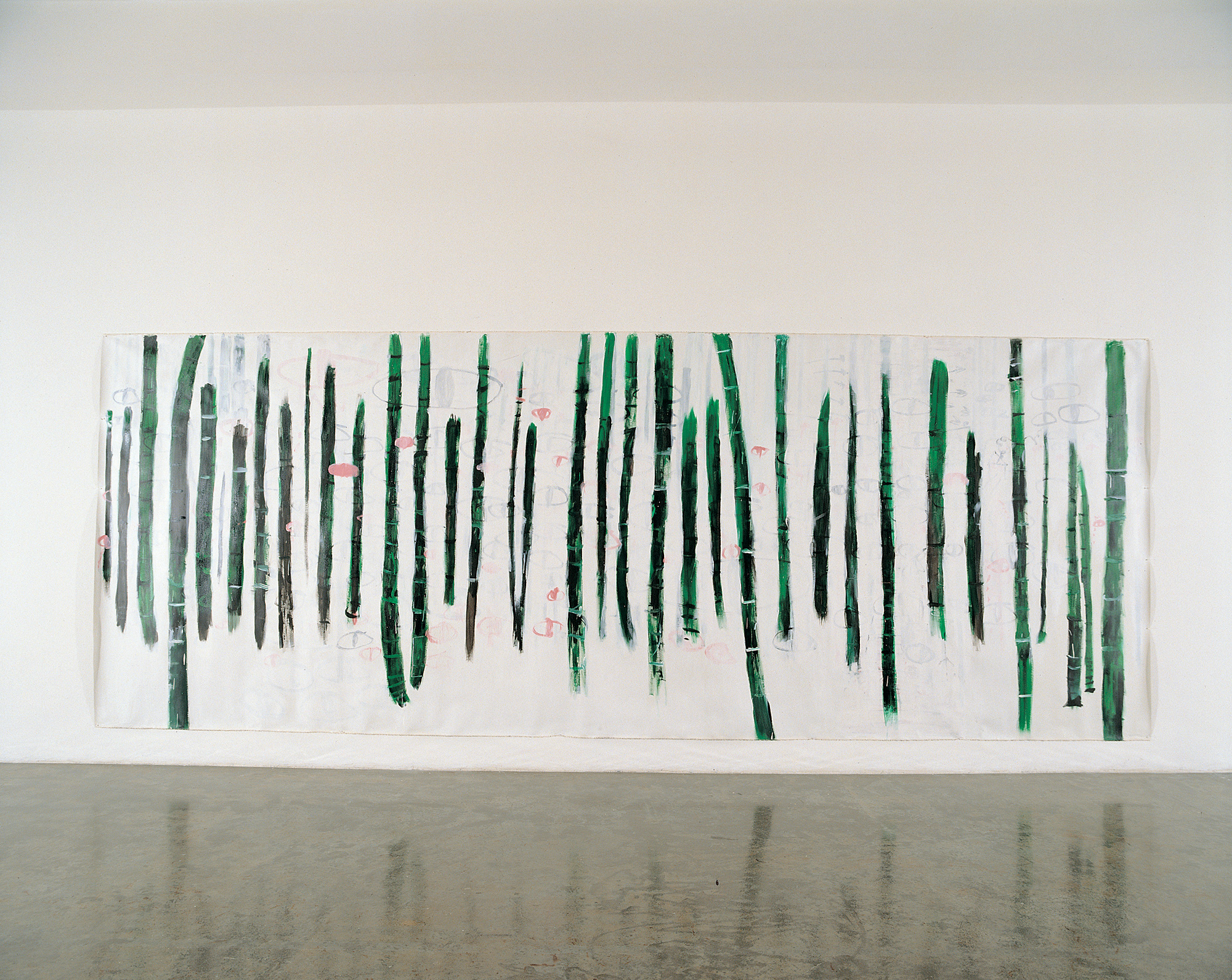
Bamboo Forests (To Bruce Lee with Love), 2006, acrylic on canvas, 210 x560